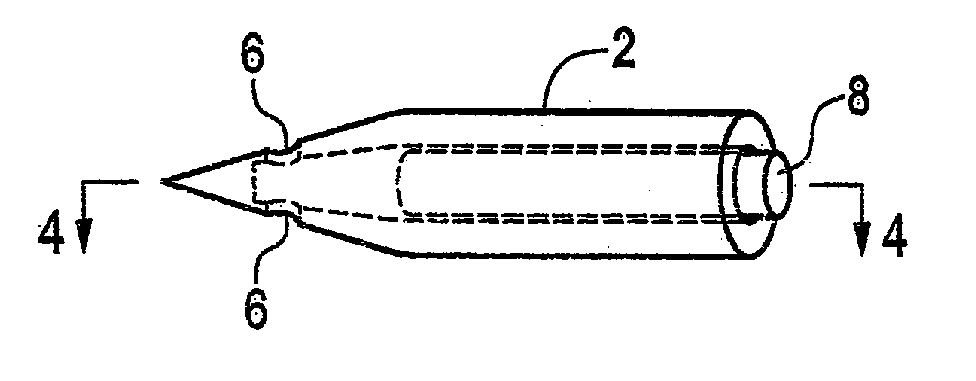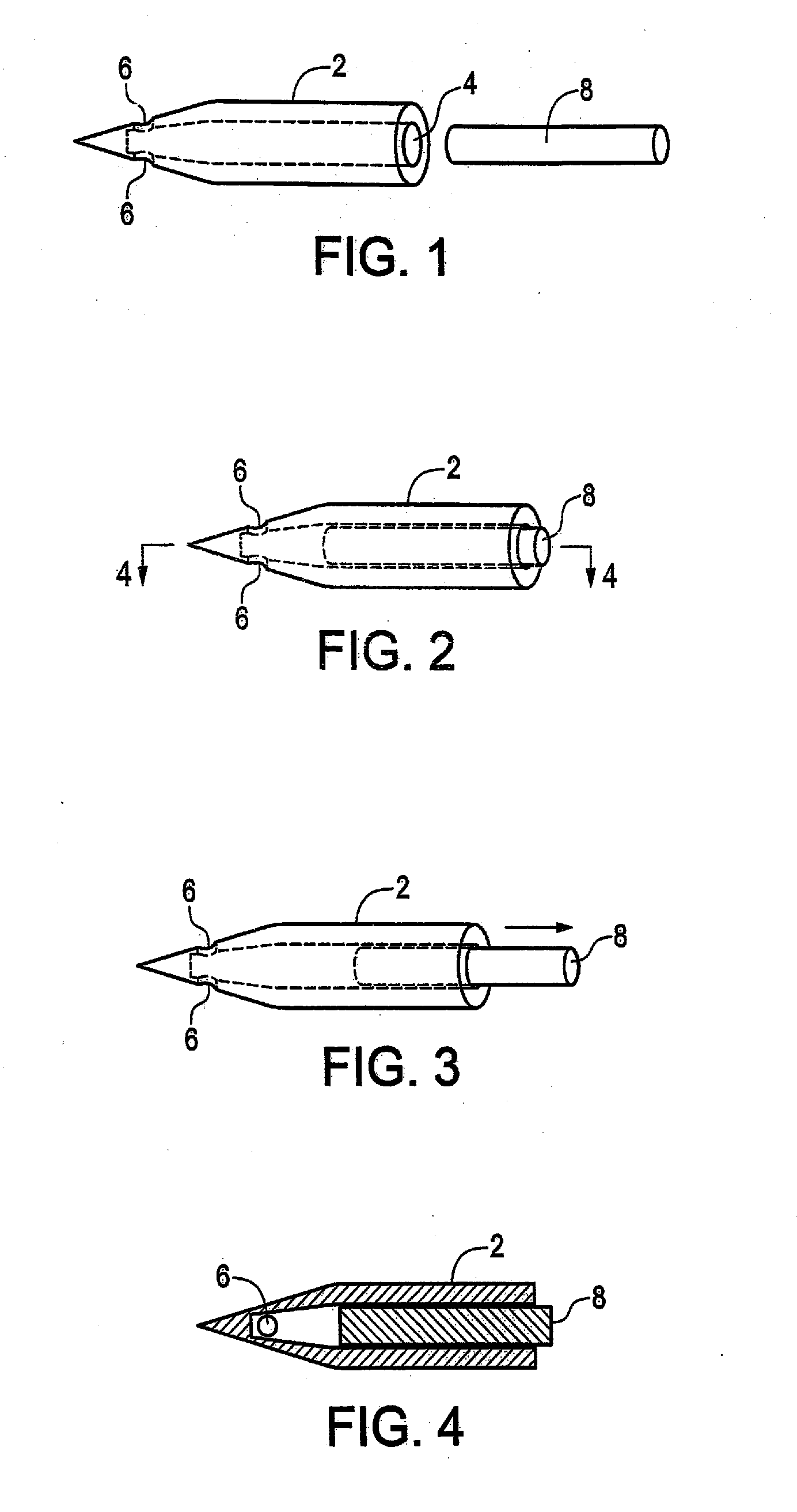Catheter
a catheter and catheter technology, applied in the field of catheters, can solve the problems of failure of iv failure of iv, etc., and achieve the effects of reducing the number of failed ivs, avoiding problems and risks, and reducing health care costs
- Summary
- Abstract
- Description
- Claims
- Application Information
AI Technical Summary
Benefits of technology
Problems solved by technology
Method used
Image
Examples
Embodiment Construction
[0024]As seen in FIG. 1, the catheter comprises an outer cannula 2, including a hollow interior 4 and openings 6 adjacent the pointed skin penetrating end which extend from the exterior of the cannula 2 to the interior 4. Because it is proposed that the outer cannula be fabricated of a preferably transparent polymeric material, and being of a dimension to minimize trauma upon insertion, the inner cannula or pushrod 8 comprises a stiffening rod which closely mates with the interior bore 4 in the outer cannula 2, such that the outer cannula can be inserted through the skin and flesh and into the vein of the subject. The elimination of a sheath reduces the risk of a failed IV.
[0025]As seen in FIGS. 2 and 4, wherein the outer cannula 2 is being inserted, the pushrod 8 is adjacent and abuts the forwardmost end of the bore 4, engaging the tapered inner wall, while strengthening and making the outer cannula 2 rigid enough to penetrate the necessary material.
[0026]As seen in FIG. 3, the out...
PUM
 Login to View More
Login to View More Abstract
Description
Claims
Application Information
 Login to View More
Login to View More - R&D
- Intellectual Property
- Life Sciences
- Materials
- Tech Scout
- Unparalleled Data Quality
- Higher Quality Content
- 60% Fewer Hallucinations
Browse by: Latest US Patents, China's latest patents, Technical Efficacy Thesaurus, Application Domain, Technology Topic, Popular Technical Reports.
© 2025 PatSnap. All rights reserved.Legal|Privacy policy|Modern Slavery Act Transparency Statement|Sitemap|About US| Contact US: help@patsnap.com



